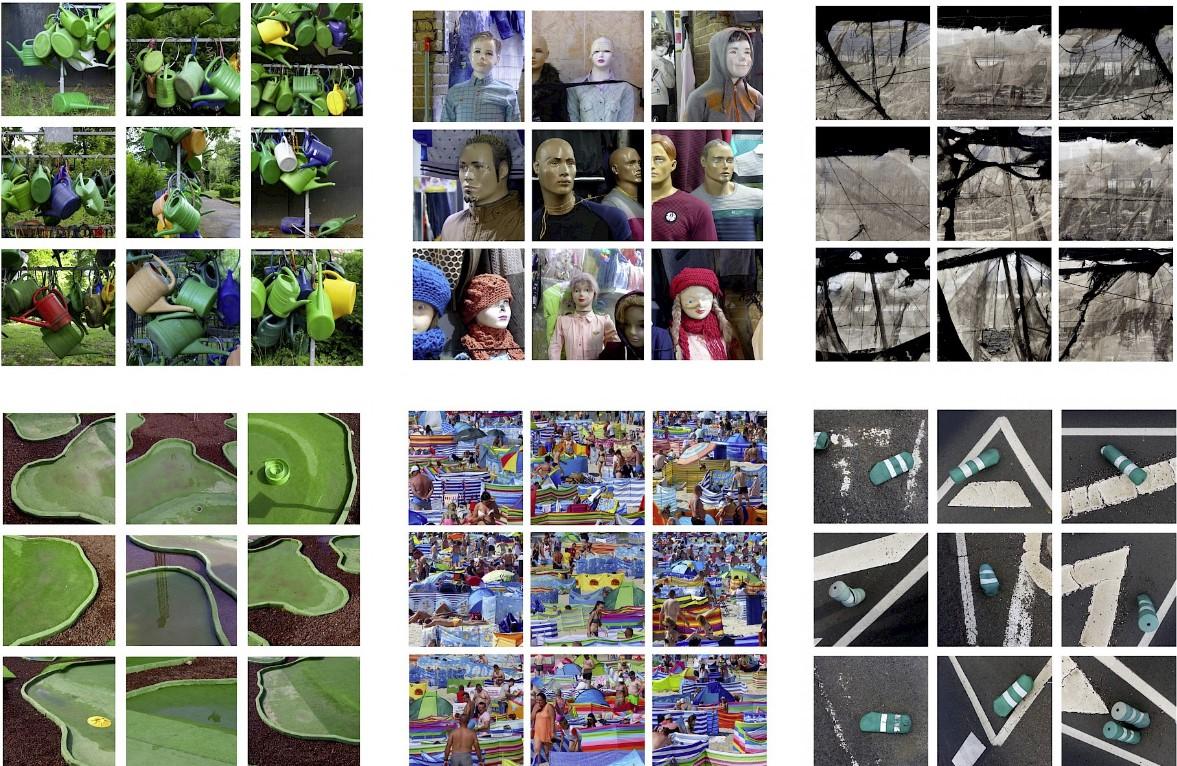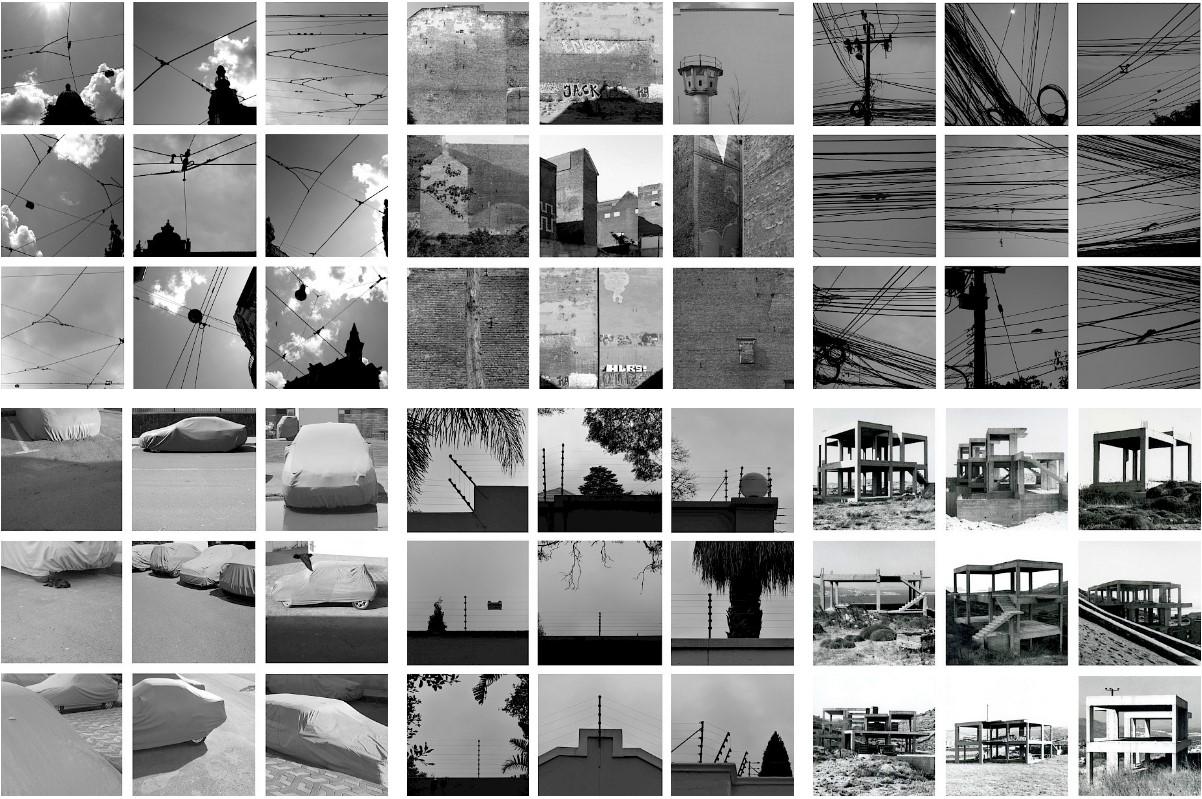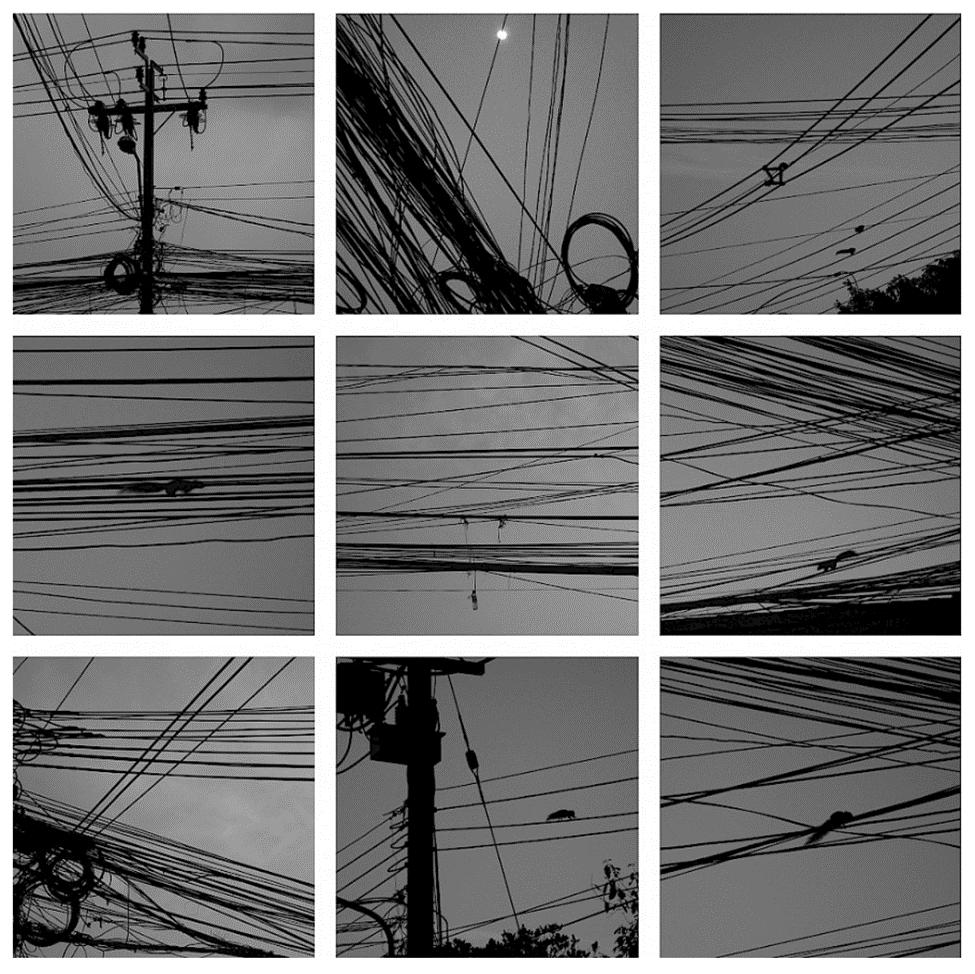
8 minute read
BORIS VON BRAUCHITSCH ‘9’ André Bergmans
The RPS Benelux-Chapter INTERVIEW by André Bergmans Boris von
Brauchitsch
André had an interview with the German art historian, curator, photographer and writer They talked about ’9’
‘9’ to the next level In the previous issue of our newsletter I wrote a small article as an introduction on the three by three panel approach. In my introduction the concept of the three by three panel was mainly described as an interesting exercise for photo clubs as a step-up towards bigger projects. In this article I will introduce a photographer that took the concept to the next level.
Boris von Brauchitsch (Aachen, 1963) is a German art historian, curator, photographer and writer. He mainly writes (scientific)books about art. Born into a family of photographers (both his father and his mother are photographers) he was heavily engaged in photography at an early age. He studied art history, archaeology and history at Frankfurt, Bonn and Berlin and became a doctor in art history with a thesis about the photographer Herbert List. Since 1992 he has also been a curator on numerous expositions on contemporary art.
Von Brauchitsch has taken the 3x3 body of work, or ‘9’ as he prefers to call it, to the next level i.e. from a simple photographic exercise to a systematic approach to photography as a process and a way of presenting its results. The change in his approach was triggered a long time ago by the observation that too many images are produced, especially while travelling. As many of us observe (at least I do), during holidays new visual impressions of unknown places make us greedy and we often return home with lots of rather pointless images that have to be ‘sorted out’ at a later stage. The digital revolution in photography allows us to take many images with no cost impact, tending to increase quantity but quality may suffer.

Memory cubes as invitations to remember Boris von Brauchitsch has a rather radical answer to this by restricting the number of images he allows himself to take at a certain location. He allows himself 3x3 pictures to be presented in a strict square grid. In many cases the subject matter to be photographed is sometimes mundane, the details that first caught his eye. This way of making images and presenting them in 3x3 panels or tableaux leaves it to the imagination of the spectator to define the whole. As a writer Boris adds short contextualising essays which bring an element of mixed media, image and text to the overall result. Over the last 30 years he has created his archive of ‘memory cubes’ as ‘invitations to remember’.
An e-mail dialogue In an e-mail dialogue I had with Von Brauchitsch I asked a few questions to further understand his way of working and the background of his approach to photography.
Question: You allow yourself to make only 9 images at a certain location to make your point. But in the end result the images also fit together in an aesthetical way and there are no double images (i.e. one that can be left out). My own experience or my way of working so far is that if I am aiming for a 3x3 I discover the topic and make a mental statement of intent, then I take many images and later I compose a fitting 3x3. All images that are not used are destroyed as if they were never made and never existed. So, they are not presented and cannot add to the flood of pointless images. My question is: do you strictly restrict yourself to making 9 or presenting 9?
Answer: I take 9 images when I come to a place for the first time. If the place offers me something I consider as ‘special’. At many places I can’t find something like that, so I didn’t take pictures. All 9 pictures are dealing with the same subject (horse statues, mirrors, inscriptions etc.), so I can arrange them to a tableau. I have many options to arrange the 9 photos! And I am trying until I am satisfied with the result. I sometimes do a bit more than 9 pictures (maybe 12 or sometimes 15) choosing the best of them before arranging the tableau.
Question: The way of working in square format is a restriction to square format. Is this a restriction because you prefer working in square format in the first place or is it a result of working in ‘9’. In other words, do you think it is feasible to do a ‘9’ in landscape or portrait or a mix of both and achieving the same goal? Have you ever tried these options?
Answer: Every format is a restriction. A restriction of the photo industry and their cameras. I use a square format because of the maximum densification. Only a circle would be more concentrated. I chose
this format just for ‘9’. In other works, I use different formats. Of course, you can combine 9 pictures as well in other than square formats, but it has a special effect, if the combination is a square again.
Question: You take as a photographer and a writer a kind of mixed media approach i.e. text and image. There is some dominant opinion (at least in the Netherlands) that an image should tell it all and even a descriptive title is ‘too much’. I tend to disagree with that and think that image can happily marry with paint, sound, text and three-dimensional objects. However, in the publication Square Magazine 904 your images are presented with an introduction but without the text. How did you feel about that? Did you have any concerns when your work was presented without the (essential and original) essay.
Answer: There is much to say about that point. In the times of ancient Rome writers thought that it is a sign of a highly intellectual level not to use pictures to illustrate thoughts. Everything should be imagination, not image. Leonardo da Vinci chose a different path. The illustrations to his ideas were a fundamental part of his writings. These two opinions exist until today. I am convinced of an elementary difference between the two media: writing and photography. So, there is no reason for not combining them. If they would use the same way of transporting information, it would be stupid to combine them, but they don’t. 35

Just if you have a descriptive title, there could be a doubling: to name a picture of a landscape with a lake ‘Landscape with Lake’ doesn’t makes much sense. But if you name it ‘Ma fea’ or ‘The home of my Grandmother’ there will be an additionally information or association. This simple example shows, that a picture can never tell it all! And a picture never tells more than 1000 words (as people are used to say). A picture tells what you see (as the viewer), your associations, your memories, your preferences. So, it tells something different to every individual viewer. I would go that far to pretend, that a picture tells nothing or very less by itself. You can choose 10 different titles for the same picture and people will see 10 different things. It’s your work as a viewer to fill the picture with information. For example, you can call a picture of a running girl ‘On the way to the ice cream parlour’, ’Fleeing an Earthquake’, or ‘Film still’ from the movie ‘Escaping into a better past. The Life of the Princess of Aragon’. All titles are possible and that’s why photos are so dangerous: they seem to tell everything, but they tell nothing without interpretation. Therefore, you can use them easily as an instrument of propaganda. My images can exist as well without texts, for that reason I agree to publish them in a magazine without text. But the little accompanying ‘stories’ gives them a (subjective) direction. There is as well one tableau in my book without a text. So, you can write your own story about it!
Question: You have taken to ‘9’ approach in your travel photography. I also noticed that in other projects the results are presented in the same format. Are you inclined to push the same approach into all your (new) projects?
Answer: No. I used the 9-format for one more project ‘Soziales Plastik’. Which is in a way a colourful and humouristic (or tragicomic) continuation of ‘9’. The story about plastic all over the world as a sign of strange cooperation, communication, destruction, capitalism, separatism, carelessness etc.
Question: I have been struggling with the reading direction of my own 3x3’s. One can read the 3x3 or 9 as a whole, in the linear way (top-down and left to right), criss-cross in all direction or in any enforced pre -defined way. When composing your 3x3 are you concerned in any way about the reading direction? I noticed it may be depending on the nature of the ‘9’… is it a time lapse, sequential, associative, documentary, typology …
Answer:You are right. The direction of reading is another interesting thing. We in the west tend to read from left to right but looking at pictures, our eyes are caught by the most important or showy aspects first. The tableaus in my book try to work in different ways. Some are in order of numbers (like ‘Marakesch’), some are a unified composition (like Amsterdam), some are arranged around a centre, some are arranged in 3 lines or as a cross or ... etc.
Question: Last and relatively unimportant, is the techniques used. I struggle in technically composing a ‘9’ and keeping the quality of the images intact. What is the technique used?
Answer: As you can see, I took my pictures as a long-term project over more or less 25 years. So, I used different cameras (analogue in the beginning, later digital cameras of very different quality). First, in the 1990’s I arranged single pictures together in frames. Later I put them together in one file with Photoshop (or a programme like that). It makes things easier, but it doesn’t really change the result.
Further I highly recommended reading ‘Neun’ by Kehrer Verlag, Heidelberg 2016 (ISBN 978-3-86828-714-1) Website: www.borisvonbrauchitsch.de








